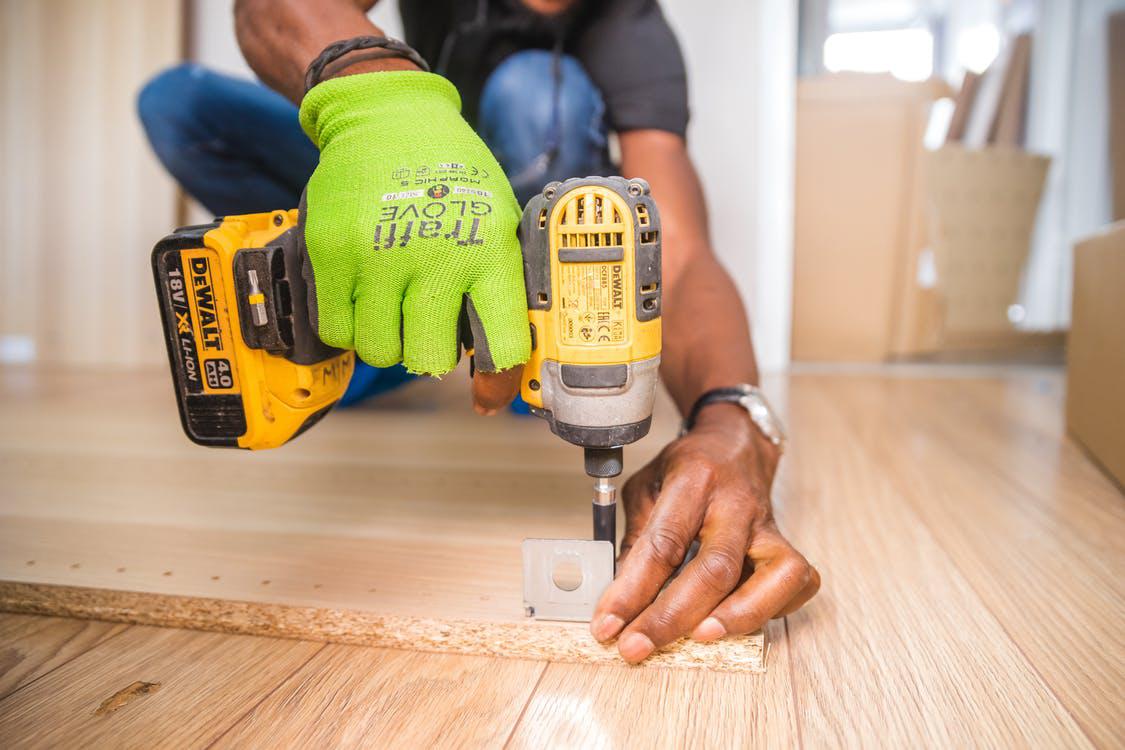Pros and cons of vinyl flooring
- Written by News Company

Vinyl flooring has become the choice of flooring for homeowners around the world due to its versatility and durability. It is water and dirt resistant and a cost-effective way to add beauty to your floor. It is mostly installed in places like the kitchen and bathroom due to its water-resistant feature. It was invented during the world war 2 era in the 1930s and completely replaced other forms of flooring option in the 1950s. it can be compared to linoleum due to its water-resistant feature, but completely replaced it a decade ago. A variety of features make this type of flooring the go-to choice for homeowners. There are a variety of styles and designs available on the market to choose from. vinyl flooring Sydney is a good place to buy different types of vinyl floorings. However, something so good cannot be without drawbacks and advantages. There are several factors that you should take into consideration before you buy vinyl flooring for your home. Today we are going to look at some Pros and cons that you should consider before buying such a flooring option.
Listed below are some of the Pros of vinyl flooring.
Low Maintainance
It is easy to maintain when compared to other types of floorings. You will have to make sure and sand, dirt or grit is properly swept from its surface to keep it neat and clean. Preferably, you should use a damp cloth to wipe the floor clean, and the use of good vinyl floor cleaner is also recommended to remove stains and dirt spots from its surface. There are not many flooring options on the market that are as easy to take care of as vinyl flooring.
Water-Resistant
Vinyl flooring is also water-resistant. A properly installed vinyl floor will not allow water to get through it, which makes it the perfect type of flooring for bathrooms and kitchens. It has a special coating of water-resistant chemical and doesn’t allow any water to get absorbed by it. You should consider installing it in places that have high moisture levels.
Comfortable
Vinyl flooring is easy for your feet and is relatively comfortable to walk on when compared with ceramic or marble flooring. Mostly, vinyl sheets come with a padded underlayer that can allow you to even walk on it barefoot. Consider this type of flooring it you have feet issues to avoid any form of discomfort.
Cheap
At its lowest end, vinyl sheets can cost as low as 60 cents per square foot, and mostly stays in an affordable price range. Depending on what your budget is, high-level premium vinyl sheets can cost up to 15 dollars per square foot. But, it still cheaper when compared to other premium flooring options such as marble, wood, or stone. The price is determined by the quality of the vinyl sheet that you choose. So it is a good idea to look at your budget before making a decision.
Durable
As well as being cheap, vinyl flooring is also durable if properly maintained. However, it will all depend on the quality of the vinyl sheet you choose to purchase. Fiberglass-reinforced sheets are the most durable option that is available on the market right now. It is resistant to damage because of its pliability. One huge advantage of using vinyl flooring is that individual damaged sheets can be replaced easily, instead of replacing the whole floor. This will save you money in the long run.
Stain-resistant
Printed vinyl sheets and tiles come with a coating of clear wear which acts as a barrier and protects it from stains and spillage. Due to this, they are very easy to maintain and clean. However, solid vinyl tiles are prone to stains as they do not come with this protective layer, and they will need to be waxed and polished occasionally.
Easy To Install
Vinyl tiles and flooring are easy to install; however, you will have to make sure the surface that you are installing it on is dry and has a level subfloor. It is possible for you to install it by yourself if you have some knowledge of using the proper tools. If you do not know how the installation process goes, you should consider hiring a professional to take care of it for you.
These were some of the advantages of vinyl floorings. Now we are going to look at some of the cons of vinyl flooring. They are listed below.
Volatile Organic Chemicals
A toxic gas out can occur with this type of flooring after they have been installed. This is due to the chemicals used in the manufacturing process of such a type of flooring option. These gasses can cause irritation, luing problems, asthma or other breathing options. The level of gases being released from the floor will depend on the age of the flooring, but usually, most gas outs occur early on.
Non-Biodegradeable
It is not biodegradable and does not break down naturally in the environment. It is also not properly disposed of and often ends up ion landfills and other garbage disposal facilities. During its manufacturing process, it also consumes petroleum and natural gas, which are non-renewable resources.
Chemical Stains
Vinyl tiles are easy to clean, but it is prone to discoloration when it comes in contact with rubber. You should avoid wearing rubber sole shoes when walking on vinyl flooring as when they rub against it, they cause a chemical reaction and discolor the vinyl tiles and leave a permanent stain on them.
Subfloor Damage
It is imperative that you have a proper subfloor that is properly level to avoid bumps being formed on the tiles over time. Due to its soft nature, it can conform to the bumps that are present on the subfloor. You should consider this fact, as vinyl tiles cannot be repaired and will have to be replaced once lumps and bumps occur on their surface.
Prone To Yellowing
In some cases, low-quality vinyl tiles will be prone to yellowing over time. This can be due to many reasons such as direct exposure to sunlight, and dirt can get trapped and start rubbing against it when people walk on it. However, if you choose to buy high-quality premium vinyl tyles, they are resistant to this form of discoloration.all in all, it depends on your budget and application. You should avoid installing vinyl floorings in areas that have high foot traffic. Restaurants or places that have installed them on their premises usually face this issue due to the number of people coming in and going it from there.
The Final Words
If you want to save money and make your space look aesthetically pleasing, vinyl flooring is the way to go as it offers durability at a very low cost. The installation process is relatively easy and can be done by any individual if they have the proper know-how. However, if it is your first time getting vinyl flooring installed at your home, you should hire some professional help. Today we have made you aware of some of the pros and cons of vinyl flooring that you should take into consideration before you go on and get one installed at your home.

